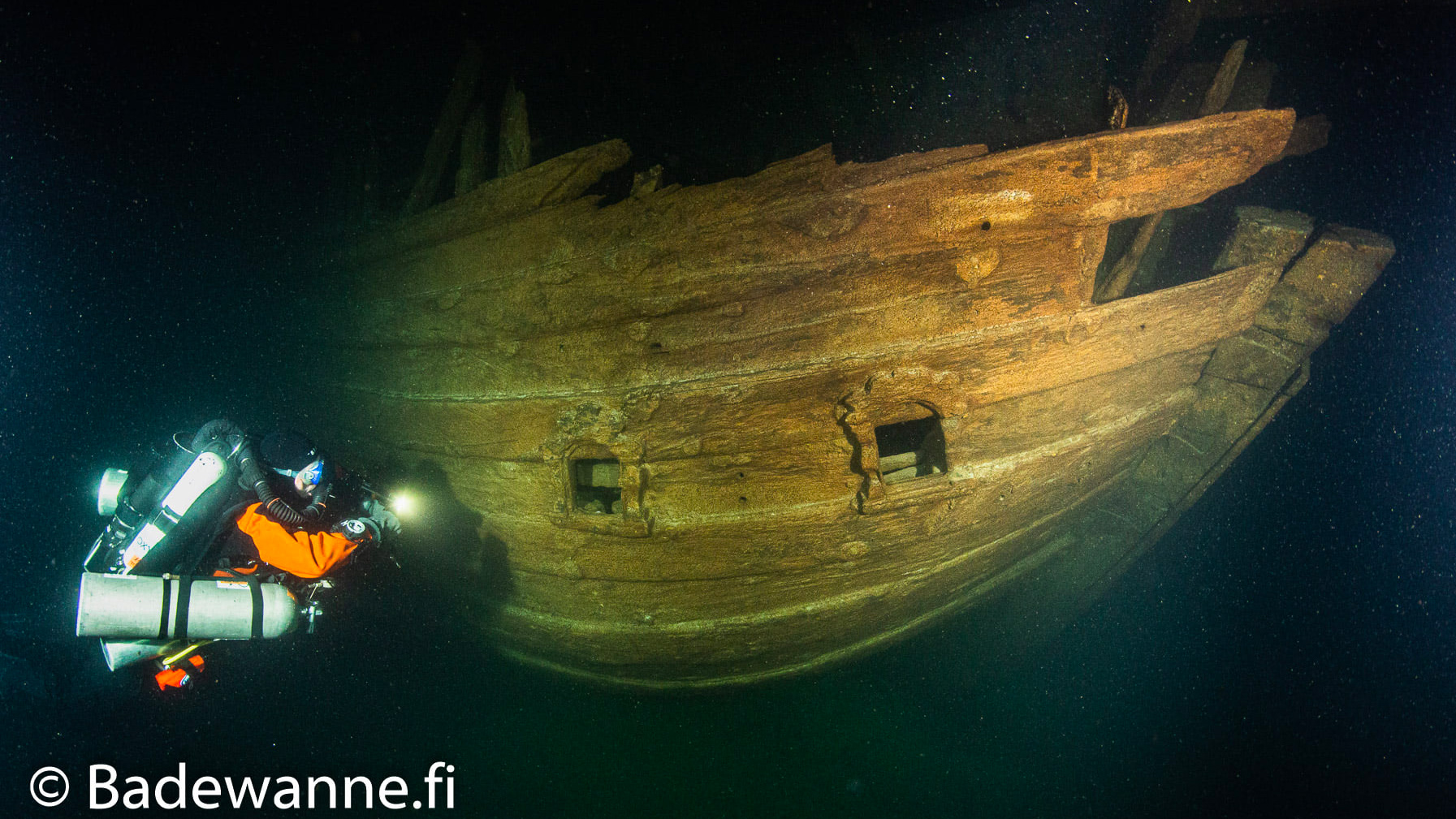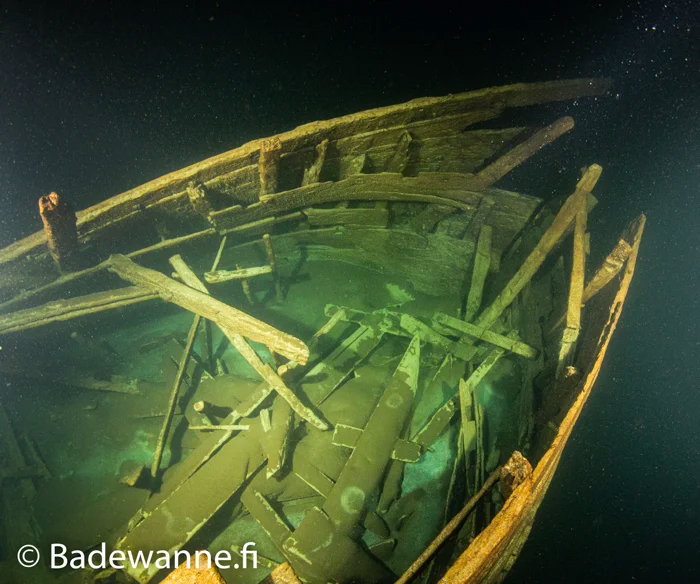Eerily well-preserved 17th-century ship found in the dark waters of the Baltic Sea

Divers from Finland have made an unexpected discovery while exploring the depths of the Baltic Sea, finding an incredibly well-preserved shipwreck dating back almost 400 years.
Volunteer divers from the nonprofit Badewanne team more often come across wrecked 20th-century relics sunk during the sea battles of World War I and WWII, so uncovering what appears to be a largely undamaged Dutch merchant vessel from the 17th century was a huge surprise.
The ship, an example of a Dutch 'fluit' (or fluyt), was found near the mouth of the Gulf of Finland, in the easternmost waters of the Baltic.
At a depth of about 85 meter (roughly 280 ft), the Badewanne diving team discovered this Dutch time capsule lying on the seabed, almost completely preserved and intact.
Showing only minor damage sustained from subsequent pelagic trawling with fishing nets, the vessel is otherwise frozen in a kind of 17th-century stasis, the team says, thanks to the properties of the water in this part of the sea — where a combination of low levels of salinity, temperature, and light can enable sunk wrecks to survive virtually unchanged for hundreds of years.
In warmer waters, wood-boring organisms flourish, and can do untold damage to relics such as this, but here, the chemistry of the Baltic — and the unknown nature of the fluit's sinking — have left us with a remarkable relic for further investigation.
Even the holds of the ship are full, the divers say, still carrying its stock of provisions and wares from when Dutch cargo vessels largely dominated seaborne trade in this part of the world, thanks in part to the pioneering advancements demonstrated by the fluit itself.
Get the world’s most fascinating discoveries delivered straight to your inbox.
These ships, which in their first iterations emerged in the 16th century, sacrificed everything for their all-important cargo. Unlike other boats of the time that were designed to switch between serving as cargo ships and war vessels, the three-masted fluit bore a cost-effective and capacious design fully intended to maximize cargo capacity.
Because of this, it could carry as much as twice the cargo of rival vessels, and advanced rigging systems ensured its deft sailing capabilities could be controlled by small crews, which also made the fluit a more profitable ship to operate.
Despite the design's success and popularity between the 16th and 18th century, relatively few fluits survive to this day. Further investigation of this particular find could reveal interesting facts about these historical treasures.
"The wreck reveals many of the characteristics of the fluit but also some unique features, not least the construction of the stern," says maritime archaeologist Niklas Eriksson from the University of Stockholm in Sweden, who will work with Finnish authorities and others to study the discovery.
"It might be that this is an early example of the design. The wreck thus offers a unique opportunity to investigate the development of a ship type that sailed all over the world and became the tool that laid the foundation for early modern globalization."
This article was originally published by ScienceAlert. Read the original article here.

Peter Dockrill is the Deputy Editor of ScienceAlert. With a background in law and technology journalism, Peter's work has appeared in APC, TechLife, PC User, Money, The Laws of Australia, and The Newcastle Law Review. Peter's science reporting was featured in "The Best Australian Science Writing 2018" anthology. He won most entertaining writer at the Consensus IT Writers Awards, and he was a finalist at the Australian IT Journo Awards. When not working, Peter likes spending time with friends, cooking, and making music. He lives in Newcastle, Australia with his wife, their two lovely daughters and a dog called Belle.




